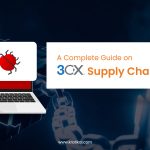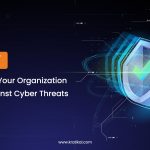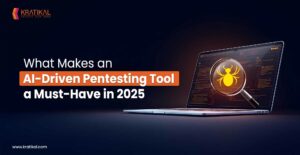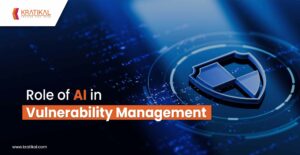Many businesses manage their client data with the help of the effective application Salesforce. Unfortunately, this also makes Salesforce servers a top target for hackers who want to steal private data. Salesforce servers’ vulnerabilities have recently resulted in a number of high-profile data breaches, costing organizations a great deal of money and reputational damage.
Individually identifiable information (PII), financial data, proprietary information, and trade secrets are all examples of sensitive data.
When this kind of information is leaked, it can have serious repercussions for the company, including financial loss, legal liability, and harm to the reputation of the brand.
In this blog, we will deep dive into what the Salesforce servers are, best practices for securing Salesforce against data leaks, and ensuring the privacy and integrity of your valuable data.
Table of Contents
Get in!
Join our weekly newsletter and stay updated
Salesforce Servers
Salesforce servers refer to the cloud-based customer relationship management (CRM) platform, which gives businesses access to a number of features and services. These servers run on a distributed design, dispersed throughout many data centers. The different salesforce servers collectively provide a strong CRM platform that helps firms manage client connections and spur growth.
Vermont adopted Salesforce Community, a cloud-based software solution created to make it simple for businesses to quickly construct websites, just like the other organizations giving the general public access to sensitive data. Huntington Bank, situated in Columbus, Ohio, was another client of Salesforce that was impacted. TCF Bank, which processed commercial loans using Salesforce Community, was just bought by the company. The accessible data fields included names, residences, Social Security numbers, titles, federal IDs, IP addresses, average monthly payrolls, and loan amounts.
Salesforce Community websites can be set up to require authentication so that only a select group of authorized users can access sensitive information and internal resources. The websites can also be set up so that anyone can browse public information without requiring authentication.
Get in!
Join our weekly newsletter and stay updated
Best Practices for Securing Salesforce against Data Leaks
- Implementing Strong User Access Controls – Salesforce security depends on managing user access. Enforce strong password policies and implement strong user authentication procedures, such as two-factor authentication (2FA). On a need-to-know basis, grant access privileges, and periodically evaluate and revoke unused permissions. You can reduce the possibility of unauthorized access and data leaks by restricting access to critical information.
- Regular Monitor User Policy – Salesforce users’ activity must be closely monitored in order to spot any security issues and unapproved access attempts. Enable Salesforce’s login history tracking and put in place a strong logging system to document user actions such as record updates or data exports. Create alerts and triggers to alert administrators to questionable activity so that it may be investigated and fixed right away.
- Data Loss Prevention Policies – Sensitive data transmission outside of your organization can be found and stopped with the aid of Data Loss Prevention (DLP) rules. Set up DLP rules in Salesforce to recognize and prevent attempts to send sensitive data, including social security numbers or credit card information, over email or other communication channels. The risk of unintentional data leaks is decreased by the additional layer of security provided by DLP policies.
- Regularly Update and Patch Your Salesforce Instance –To fix security flaws and improve platform stability, Salesforce frequently issues updates and fixes. Maintain current with new releases and quickly deploy routine upgrades. Utilize Salesforce’s Security Health Check feature as well to evaluate the security settings of your company and pinpoint any areas that need improvement.
- Enable IP Restrictions and Network Security Measures – Consider putting in place IP limits to restrict access to your Salesforce instance to just authorized networks or IP addresses. This stops unauthorized access attempts coming from unidentified sources. Add an additional layer of defense against external attacks by putting in place network security measures like firewalls and intrusion detection systems.
- Proper server configuration– One of the reasons for the Salesforce data leak was a misconfiguration of the server, which allowed unauthorized users to access sensitive data that was publicly available. Organizations should avoid using default server settings and follow proper security protocols to prevent future data leaks.
Conclusion
In today’s information-driven corporate climate, safeguarding your Salesforce instance against data leaks is crucial. You may strengthen your Salesforce environment and reduce the risk of data breaches by putting into place strict user access rules, data encryption, DLP policies, and user activity monitoring. As part of a complete security strategy, it is also important to educate staff members on data security best practices, keep up with system patches, and enable IP limitations. By adhering to these best practices, you can make sure that your customers’ data is protected and that you are using Salesforce to its full potential for your company’s purposes.
Salesforce security against data leaks involves a multi-layered strategy that combines technical protections, user access rules, and constant monitoring. Organizations may greatly decrease the risk of data leaks and secure the privacy and integrity of their Salesforce data by putting measures like 2FA, encryption, routine backups, monitoring, DLP rules, and employee training into place.
Kratikal, a cert-in empanelled organization, helps in preventing salesforce security leaks. It allows companies in protecting themselves from various cyberattacks. Kratikal offers a range of services, including compliance and risk management, network and cloud security, and web and mobile application security.
Always keep in mind that safeguarding sensitive data is a continuous effort and that maintaining a secure Salesforce environment requires remaining current with the best security practices.









Leave a comment
Your email address will not be published. Required fields are marked *